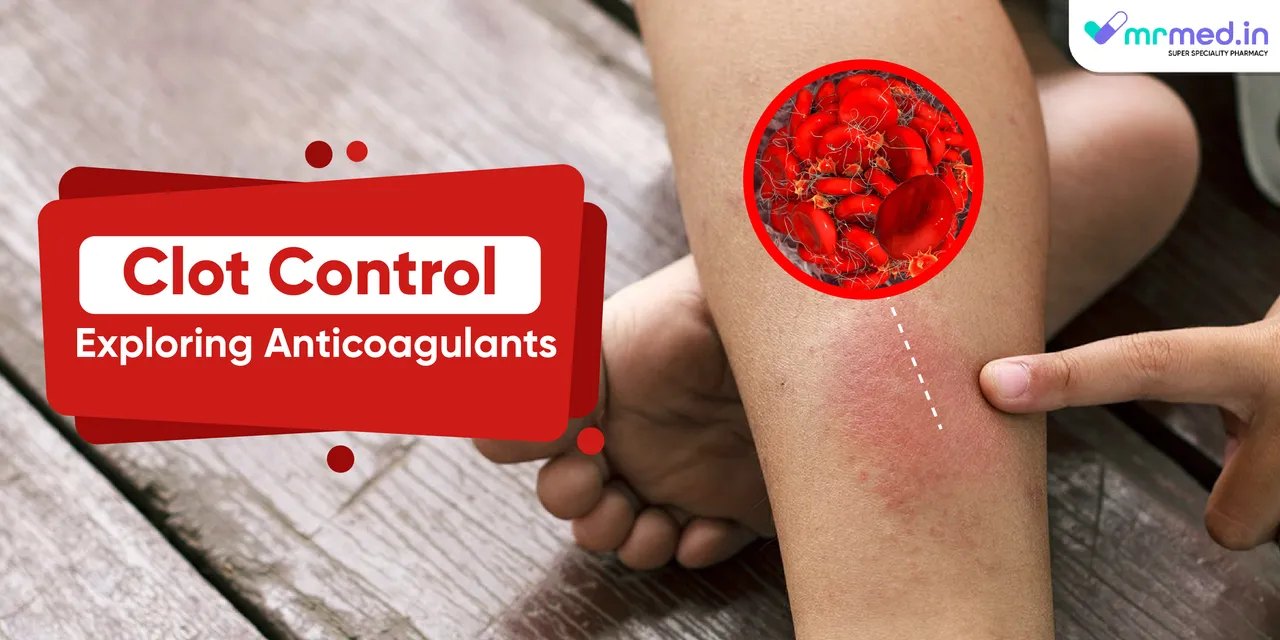
Blood clots are important as they prevent blood loss during an injury. However, sometimes unwanted blood clots may raise serious health risks, which may lead to serious discomfort and death. These clots can lead to serious conditions such as deep vein thrombosis (DVT), pulmonary embolism (PE), and strokes. Around 100,000 people die due to DVT and PE each year. Therefore, management of these blood clots is crucial. In this issue, we will comprehensively outline the symptoms and causes of blood clots, and further available therapeutic options for clot control will be delineated.
What is a blood clot?
Blood clots are semi-solid, gelly-like materials formed in veins and arteries to prevent bleeding. They consist of platelets and fibrin protein. Though blood clots are essential to prevent blood loss during any accident or injury, they can sometimes cause severe health issues like DVT and PE. Therefore, it is essential to know about the symptoms that help you get the treatment you need at the right time.
What are the symptoms of PE and DVT?
The symptoms of PE and DVT vary with the severity of the health condition. We are enlisting the major symptoms commonly observed in patients.
Symptoms of PE
Shortness of breath
Cough
Chest pain
Hemoptysis
Syncope
Symptoms of DVT
Tenderness
Swelling
Warmth in the affected area
Redness or discoloration of the overlying skin
Physicians recommend anticoagulants to treat DVT and PE-related complications. In the next section, we will discuss anticoagulants.
What are anticoagulants?
Anticoagulants are medications that prevent blood clot formation. They interfere with the body's natural clotting mechanisms, thereby reducing the likelihood of clot-related complications.
How Do Anticoagulants Work?
Anticoagulants disrupt the coagulation biological pathway, which is the series of steps that the body uses to form blood clots. They block various components utilized in the blood clotting pathway to prevent unwanted blood clots. Common anticoagulants include:
Warfarin: This oral anticoagulant works by inhibiting the synthesis of vitamin K-dependent clotting factors.
Heparin and Low Molecular Weight Heparins (LMWH): These are typically administered via injection and work by enhancing the activity of antithrombin, a natural inhibitor of clotting factors.
Direct Oral Anticoagulants (DOACs): This newer class of anticoagulants includes drugs like rivaroxaban and apixaban, which directly inhibit specific clotting factors.
Sometimes, low platelet count leads to the risk of severe bleeding; therefore, doctors use several medicines that enhance platelet production. One of the examples of this class drug is Celbopag 25mg Tablets. This medicine contains eltrombopag, which is used to treat thrombocytopenia, a condition characterized by abnormally low platelet counts. It works by inducing the production of platelets, thereby helping patients who are at risk of bleeding due to low platelet levels. This medication is particularly useful in conditions such as chronic immune thrombocytopenia (ITP) and is sometimes used in combination with other therapies.
India, with its diverse population, has a significant burden of cardiovascular diseases and thrombotic disorders. The availability and accessibility of anticoagulant drugs in India have seen considerable improvement over the years. Commonly used anticoagulants such as warfarin, heparin, and DOACs are widely available. Moreover, medications like Celbopag and eltrombopag are accessible for patients with specific needs, ensuring comprehensive management of clot-related disorders.
The cost and accessibility of these drugs vary across different regions in India, with urban areas typically having better access to a range of anticoagulants. The Indian government and various healthcare providers are continuously working towards making these life-saving medications more affordable and accessible to the broader population.
Some Important FAQ
Q: How does eltrombopag work in treating thrombocytopenia?
A: Eltrombopag works by stimulating the production of platelets in the bone marrow. It is used to treat conditions like chronic immune thrombocytopenia (ITP), where patients have abnormally low platelet counts and are at increased risk of bleeding.
Q: What are the common anticoagulant drugs available in India?
A: Common anticoagulant drugs available in India include warfarin, heparin, low molecular weight heparins (LMWH), and direct oral anticoagulants (DOACs) like rivaroxaban and apixaban. Additionally, specific drugs like Celbopag and eltrombopag are available for particular conditions.
Q: How are anticoagulants monitored in patients?
A: Patients on anticoagulant therapy require regular blood tests to monitor their clotting status. These tests help in adjusting the dosage of the anticoagulant to ensure its efficacy while minimizing the risk of bleeding.
Q: What precautions should patients take while on anticoagulant therapy?
A: Patients should be aware of potential drug interactions and dietary factors that can affect anticoagulant efficacy. They should inform their healthcare provider of all medications and supplements they are taking and avoid activities that increase the risk of bleeding.